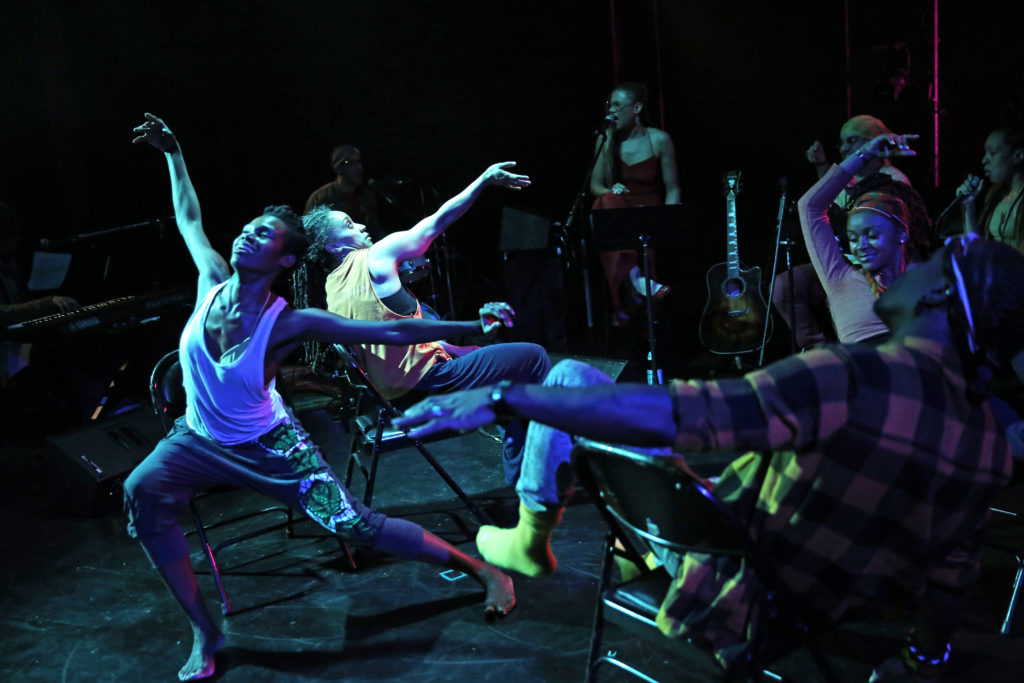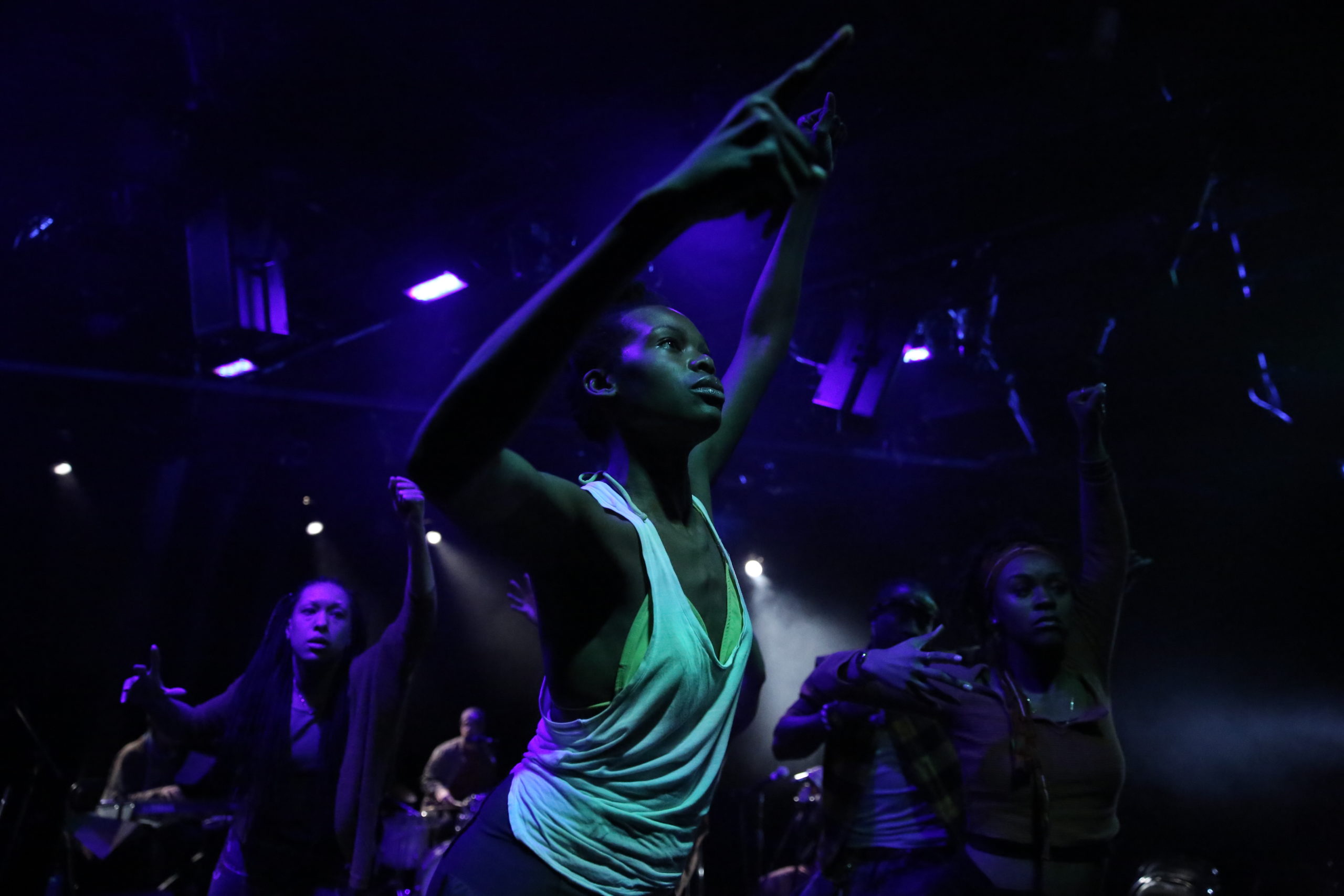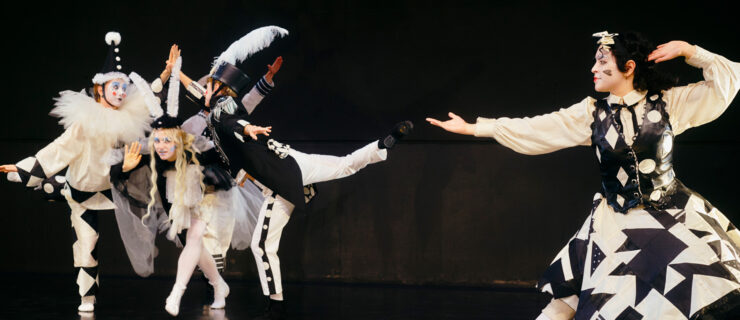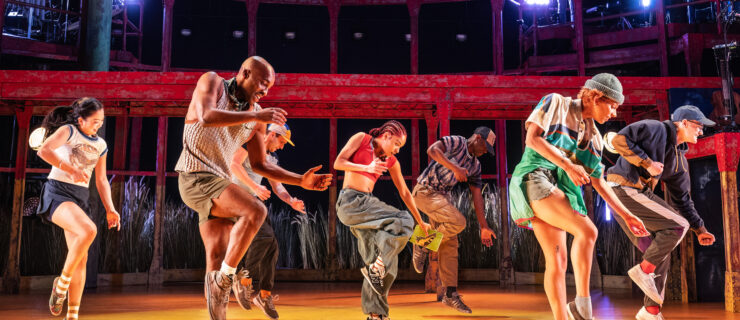Socrates, Fairies and Cannabis: Chanon Judson on Her Surprising Recent Theater Projects
Chanon Judson knows all too well the roller coaster of making work during a pandemic.
This month, two shows she’d be working on—Cannabis! A Viper Vaudeville, a time-traveling theatrical concert about the history of cannabis that she was co-choreographing and performing in, and The Hang, a queer jazz opera by Taylor Mac that imagines the final hours of Socrates’ life, which she was choreographing—were scheduled to run simultaneously in New York City’s Prototype Festival.
But like many of the experimental festivals that were set to kick off the year in New York City, the Prototype Festival postponed their programming just as it was about to begin. Cannabis! will have to wait to make its premiere, although The Hang will open this month at HERE Arts Center, just a few weeks late, on January 20.
Prior to the postponement, Dance Magazine spoke to Judson, who is also the co-artistic director of Urban Bush Women, about working on these two singular productions, and the role dance plays in them.
How did you get involved in these shows?
Cannabis! grew out of my relationship of working with Talvin Wilks [Cannabis! dramaturg and co-director], one of our longtime collaborators with Urban Bush Women. He’s someone I’ve grown fond of as a collaborator, as a mentor. My relationship with Taylor Mac has a similar genesis—I worked with Taylor first in “A 24-Decade History of Popular Music,” where Jawole [Willa Jo Zollar, UBW founder] had done some choreography.
How have you navigated working on both shows simultaneously?
What’s useful is that they use different parts of my brain and body. In Cannabis!, I’m a collaborator, a dance captain and I’m in the work, so it asks for different preparation in terms of my body being the primary vessel. And so there’s a different level of responsibility—there’s definitely homework that I take with me in terms of really listening to the music. But it’s not the same amount of homework as the creative leads. I think that that gives breath for The Hang, where I do take on that responsibility. It’s like puzzle-making that sometimes happens in my body as a way to understand where the truth and the answers lie inside of the work. But it also happens inside of charts and diagrams and index cards. So that’s a different way that it asks me to show up in the room.

Tell me more about The Hang, and what the process has been like for you.
The Hang has 26 songs that you look at and you’re like, “How did all of this come out of a singular mind?” Matt Ray literally improvised the entire score—Taylor would send him a poem, and Ray would put on his recorder and improvise.
The story of The Hang is that the ensemble of radical fairies wants to mourn over Socrates, who is at his last day of life—Socrates is drinking the hemlock, and it’s about to be over. And they want to make a grand affair of it, and Socrates says, “Actually, I want to spend this last day the way I have modeled my life, which is in acts of consideration, so let’s hang this day.”
The work is incredible—it’s massive. And it’s funny, because initially we wanted it to not be massive. Taylor was like, “I always do these big, epic things, and I want to do something more intimate, and less like this outward thrust into the audience.” And in some ways, particularly in terms of how the audience engages, it really does hold true to that. And in some ways, it’s still pretty massive. It’s a dense work—one of my challenges has been to make sure that I don’t put so much movement and staging inside of it so that people can hear the words, because the writing is really brilliant. I want to make space for the audience to hold it and grapple with it and for it to leave an impression.
What is the movement like for each show—what role does it play?
Inside of Cannabis!, the movement offers the culture or the frame for the songs. And the dancers, we’re like vapor or smoke; we morph and shift in time, starting from the beginning of time, being the embodiment of a cannabis bud.
The Hang starts with this big idea. And the way the trajectory of the show is, it actually simmers down, as opposed to “Let me grow to the moment of ‘Now I move.’” We talked about scale and modulation a lot in the music and the movement language, and so we start in high drama and we work our way to the sensibility of what I call “kiki cool.”
What’s the through line between these works and your work with UBW?
They’re both ensemble works, and my involvement with them is absolutely related to the body of knowing that I have from working in UBW. It’s really one of the things that I lift up about UBW in terms of the methodologies that Jawole and collaborators have grown; it’s very intentional ways of working in collaboration and ensemble.




